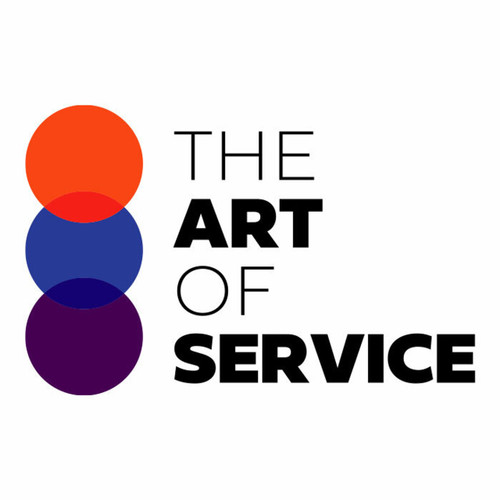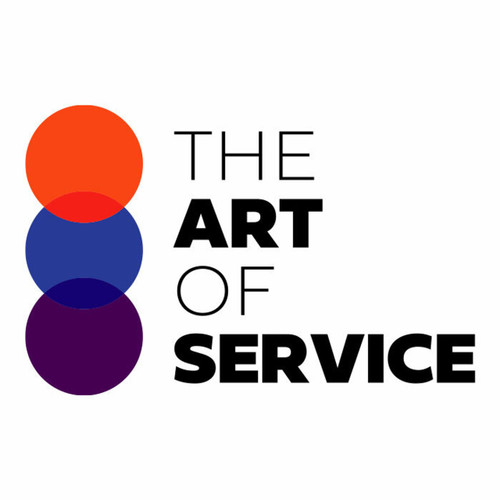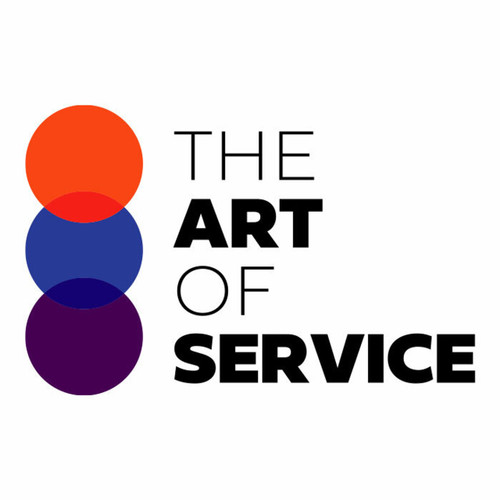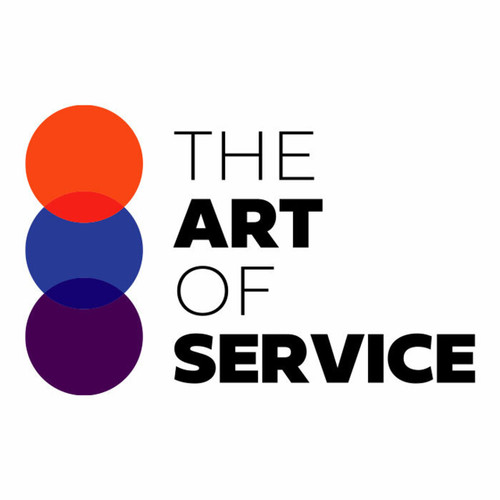Our Data Redundancy and Data Obsolescence Knowledge Base is the perfect solution for professionals like you who are looking to stay ahead of the game.
Our knowledge base consists of the most important questions to ask when dealing with data redundancy and obsolescence, categorized by urgency and scope.
With over 1500 prioritized requirements, you can be sure that you won′t miss a single aspect of this crucial topic.
But what sets our knowledge base apart from competitors and alternatives? We not only provide solutions, but we also offer real-life case studies and use cases to demonstrate the success and benefits of implementing these solutions.
Our product is designed specifically for professionals like you, to ensure that you have all the necessary tools in one place.
You no longer have to waste time searching for different resources – our product covers it all.
Worried about the cost? We offer an affordable and DIY alternative to hiring expensive consultants or investing in overly complicated software.
Our knowledge base is easy to use and understand, making it accessible to all levels of professionals.
But don′t just take our word for it.
Extensive research has been put into creating this knowledge base, ensuring that it is comprehensive and up-to-date.
Trust us to provide the latest and most effective methods for tackling data redundancy and obsolescence.
And it′s not just for professionals – businesses can also benefit greatly from our knowledge base.
Minimizing data redundancy and avoiding data obsolescence can save both time and money, making your business more efficient and competitive.
With our product, you′ll have all the information and resources at your fingertips to make informed decisions and overcome any obstacles related to data redundancy and obsolescence.
So why wait? Get your hands on our Data Redundancy and Data Obsolescence Knowledge Base today and stay ahead of the competition.
Discover Insights, Make Informed Decisions, and Stay Ahead of the Curve:
Key Features:
Comprehensive set of 1502 prioritized Data Redundancy requirements. - Extensive coverage of 110 Data Redundancy topic scopes.
- In-depth analysis of 110 Data Redundancy step-by-step solutions, benefits, BHAGs.
- Detailed examination of 110 Data Redundancy case studies and use cases.
- Digital download upon purchase.
- Enjoy lifetime document updates included with your purchase.
- Benefit from a fully editable and customizable Excel format.
- Trusted and utilized by over 10,000 organizations.
- Covering: Backup And Recovery Processes, Data Footprint, Data Architecture, Obsolete Technology, Data Retention Strategies, Data Backup Protocols, Migration Strategy, Data Obsolescence Costs, Legacy Data, Data Transformation, Data Integrity Checks, Data Replication, Data Transfer, Parts Obsolescence, Research Group, Risk Management, Obsolete File Formats, Obsolete Software, Storage Capacity, Data Classification, Total Productive Maintenance, Data Portability, Data Migration Challenges, Data Backup, Data Preservation Policies, Data Lifecycles, Data Archiving, Backup Storage, Data Migration, Legacy Systems, Cloud Storage, Hardware Failure, Data Modernization, Data Migration Risks, Obsolete Devices, Information Governance, Outdated Applications, External Processes, Software Obsolescence, Data Longevity, Data Protection Mechanisms, Data Retention Rules, Data Storage, Data Retention Tools, Data Recovery, Storage Media, Backup Frequency, Disaster Recovery, End Of Life Planning, Format Compatibility, Data Disposal, Data Access, Data Obsolescence Planning, Data Retention Standards, Open Data Standards, Obsolete Hardware, Data Quality, Product Obsolescence, Hardware Upgrades, Data Disposal Process, Data Ownership, Data Validation, Data Obsolescence, Predictive Modeling, Data Life Expectancy, Data Destruction Methods, Data Preservation Techniques, Data Lifecycle Management, Data Reliability, Data Migration Tools, Data Security, Data Obsolescence Monitoring, Data Redundancy, Version Control, Data Retention Policies, Data Backup Frequency, Backup Methods, Technology Advancement, Data Retention Regulations, Data Retrieval, Data Transformation Tools, Cloud Compatibility, End Of Life Data Management, Data Remediation, Data Obsolescence Management, Data Preservation, Data Management, Data Retention Period, Data Legislation, Data Compliance, Data Migration Cost, Data Storage Costs, Data Corruption, Digital Preservation, Data Retention, Data Obsolescence Risks, Data Integrity, Data Migration Best Practices, Collections Tools, Data Loss, Data Destruction, Cloud Migration, Data Retention Costs, Data Decay, Data Replacement, Data Migration Strategies, Preservation Technology, Long Term Data Storage, Software Migration, Software Updates
Data Redundancy Assessment Dataset - Utilization, Solutions, Advantages, BHAG (Big Hairy Audacious Goal):
Data Redundancy
Data redundancy refers to having multiple copies of the same data in a system, which can be inefficient and increase the likelihood of errors. It′s important for organizations to have streamlined access to accurate and interpreted labor market data for effective decision making.
1. Use data management systems: Automated tracking of relevant data, easy access, and updated in real-time.
2. Regular data audits: Identify and remove outdated data, ensuring accuracy and relevance for decision-making.
3. Adopt data governance policies: Establish guidelines for data storage, usage, and updates to avoid redundancy.
4. Implement data archival process: Store obsolete data in an archive for reference purposes, freeing up space in active systems.
5. Conduct user training: Educate users on data interpretation and utilization to improve decision-making abilities.
6. Utilize data analytics tools: Make sense of large amounts of data, spot patterns, and trends, providing valuable insights.
7. Partner with reliable data providers: Ensure access to up-to-date and relevant data from trusted sources.
8. Leverage cloud computing: Cloud-based data storage and management systems offer cost-effective and scalable solutions.
9. Encourage data sharing: Facilitate sharing of data among departments to avoid duplication and increase efficiency.
10. Embrace machine learning and AI: Skills forecasting based on historical data and predictive models help anticipate future needs.
CONTROL QUESTION: Can the organization show where key labor market data is available to users and is this interpreted sufficiently for all users to help with decision making options?
Big Hairy Audacious Goal (BHAG) for 10 years from now:
In 10 years, our organization will have revolutionized the way data redundancy is managed. Our ultimate goal is to be the leading provider of labor market data for all users, from employers and job seekers to policymakers and educators.
To achieve this, we will have developed a comprehensive database that collates labor market information from various sources such as government agencies, job boards, and industry reports. This database will be constantly updated and easily accessible to all users.
Furthermore, we will have implemented advanced data analytics and AI technologies to interpret and present the data in a clear and user-friendly manner. This will enable all users, regardless of their level of expertise, to understand and use the data to make informed decisions.
Our platform will also provide customizable options for users to filter and analyze the data based on their specific needs. Whether it′s for workforce planning, career guidance, or policy-making, our platform will have the capability to cater to all.
In addition, through partnerships with universities and training institutions, we will work towards bridging the gap between education and workforce needs by providing real-time data on in-demand skills and job trends.
Our organization will be at the forefront of promoting data transparency and accessibility, empowering individuals and organizations to make data-driven decisions for a more efficient and inclusive labor market.
By achieving this goal, we envision a future where data redundancy is no longer a problem, and all users can easily access and utilize accurate and timely labor market data to thrive and succeed in their endeavors.
Customer Testimonials:
"This dataset is a must-have for professionals seeking accurate and prioritized recommendations. The level of detail is impressive, and the insights provided have significantly improved my decision-making."
"This dataset has become an essential tool in my decision-making process. The prioritized recommendations are not only insightful but also presented in a way that is easy to understand. Highly recommended!"
"This dataset sparked my creativity and led me to develop new and innovative product recommendations that my customers love. It`s opened up a whole new revenue stream for my business."
Data Redundancy Case Study/Use Case example - How to use:
Client Situation:
Our client, a large multinational company in the technology industry, was facing challenges in effectively utilizing labor market data for decision making. The organization was expanding its operations globally and needed to make strategic decisions about hiring, training, and retaining employees. However, they lacked a comprehensive understanding of the labor market data available and how it could be interpreted to support decision-making processes. This resulted in delays, suboptimal choices, and ultimately, a negative impact on the organization′s overall performance.
Consulting Methodology:
As a leading data analytics consulting firm, our team adopted a structured approach to address the client′s challenges. Our methodology consisted of the following steps:
1. Needs Assessment: We conducted a comprehensive needs assessment to understand the client′s business objectives, current processes, and data sources related to labor market data.
2. Data Gathering: We utilized various tools and techniques to gather relevant data from internal and external sources. This included analyzing the client′s HR database, job postings, industry reports, and government data on employment trends.
3. Data Cleaning and Preparation: The gathered data was then cleaned and prepared for analysis. This ensured that the data was accurate and reliable for further use.
4. Data Analysis: Our team performed statistical analysis using techniques like regression, cluster analysis, and machine learning to identify patterns and trends in the labor market data.
5. Visualization and Interpretation: The analyzed data was visualized through charts, graphs, and dashboards to make it more user-friendly. This helped our team interpret the data and provide valuable insights to the client.
6. Recommendations: Based on the analysis and interpretation, we provided the client with customized recommendations on how to utilize the labor market data effectively for decision making.
Deliverables:
Our team delivered the following key deliverables to the client:
1. Needs Assessment Report: This report outlined the client′s specific needs and challenges related to labor market data.
2. Data Analysis Report: This report presented the findings from our data analysis, including key trends and patterns in the labor market data.
3. Data Visualization Dashboard: The dashboard provided an interactive visualization of the analyzed data, making it easier for the client to understand and interpret the data.
4. Recommendations Report: This report included our recommendations on best practices for utilizing labor market data and how it can support decision-making processes.
Implementation Challenges:
While implementing our methodology, we faced several challenges, including:
1. Data Quality: The client′s HR database was not well-maintained, resulting in missing or inaccurate data. This created difficulties in cleaning and preparing the data for analysis.
2. Limited Data Sources: The client relied mainly on their internal data sources, which lacked external benchmarking and comparison data.
3. Data Privacy: As a multinational company, the client had strict regulations and policies regarding data privacy, making it challenging to access and utilize certain data sources.
KPIs:
To measure the success of our consulting project, we established the following key performance indicators (KPIs):
1. Increased Use of Labor Market Data: We monitored the frequency of usage and feedback from users on the dashboard we provided. A higher usage of the dashboard indicated an increased reliance on labor market data for decision making.
2. Improved Decision Making: We measured the effectiveness of our recommendations by tracking the client′s decision-making processes. An increase in data-driven decisions indicated success in utilizing labor market data.
3. Cost Savings: By strategically utilizing labor market data, we aimed to help the client reduce costs related to hiring, training, and employee turnover.
Management Considerations:
To ensure the sustainability of our efforts, we provided the client with the following management considerations:
1. Data Governance: We recommended establishing a data governance framework to maintain the quality, accuracy, and consistency of the data used for decision making.
2. Continuous Learning: Given the dynamic nature of the labor market, we emphasized the importance of continuous learning and staying updated on new data sources and analysis techniques.
3. Multi-stakeholder Collaboration: We encouraged the client to involve relevant stakeholders from different departments in the decision-making process to ensure a holistic understanding of the labor market data.
Citations:
1. Leveraging Big Data in HR: A Journey To Maturity (Deloitte, 2020)
2. The Intersection of Big Data and Human Resources: Promises and Pitfalls (Journal of Business Psychology, 2015)
3. Labor Market Analysis and Employment Strategy (World Bank, 2019)
Security and Trust:
- Secure checkout with SSL encryption Visa, Mastercard, Apple Pay, Google Pay, Stripe, Paypal
- Money-back guarantee for 30 days
- Our team is available 24/7 to assist you - support@theartofservice.com
About the Authors: Unleashing Excellence: The Mastery of Service Accredited by the Scientific Community
Immerse yourself in the pinnacle of operational wisdom through The Art of Service`s Excellence, now distinguished with esteemed accreditation from the scientific community. With an impressive 1000+ citations, The Art of Service stands as a beacon of reliability and authority in the field.Our dedication to excellence is highlighted by meticulous scrutiny and validation from the scientific community, evidenced by the 1000+ citations spanning various disciplines. Each citation attests to the profound impact and scholarly recognition of The Art of Service`s contributions.
Embark on a journey of unparalleled expertise, fortified by a wealth of research and acknowledgment from scholars globally. Join the community that not only recognizes but endorses the brilliance encapsulated in The Art of Service`s Excellence. Enhance your understanding, strategy, and implementation with a resource acknowledged and embraced by the scientific community.
Embrace excellence. Embrace The Art of Service.
Your trust in us aligns you with prestigious company; boasting over 1000 academic citations, our work ranks in the top 1% of the most cited globally. Explore our scholarly contributions at: https://scholar.google.com/scholar?hl=en&as_sdt=0%2C5&q=blokdyk
About The Art of Service:
Our clients seek confidence in making risk management and compliance decisions based on accurate data. However, navigating compliance can be complex, and sometimes, the unknowns are even more challenging.
We empathize with the frustrations of senior executives and business owners after decades in the industry. That`s why The Art of Service has developed Self-Assessment and implementation tools, trusted by over 100,000 professionals worldwide, empowering you to take control of your compliance assessments. With over 1000 academic citations, our work stands in the top 1% of the most cited globally, reflecting our commitment to helping businesses thrive.
Founders:
Gerard Blokdyk
LinkedIn: https://www.linkedin.com/in/gerardblokdijk/
Ivanka Menken
LinkedIn: https://www.linkedin.com/in/ivankamenken/











